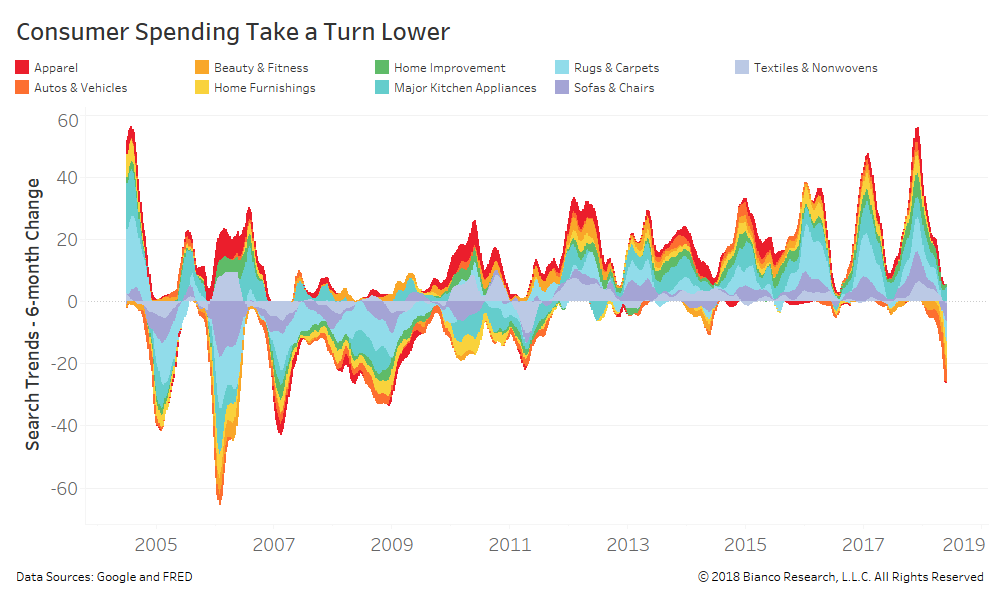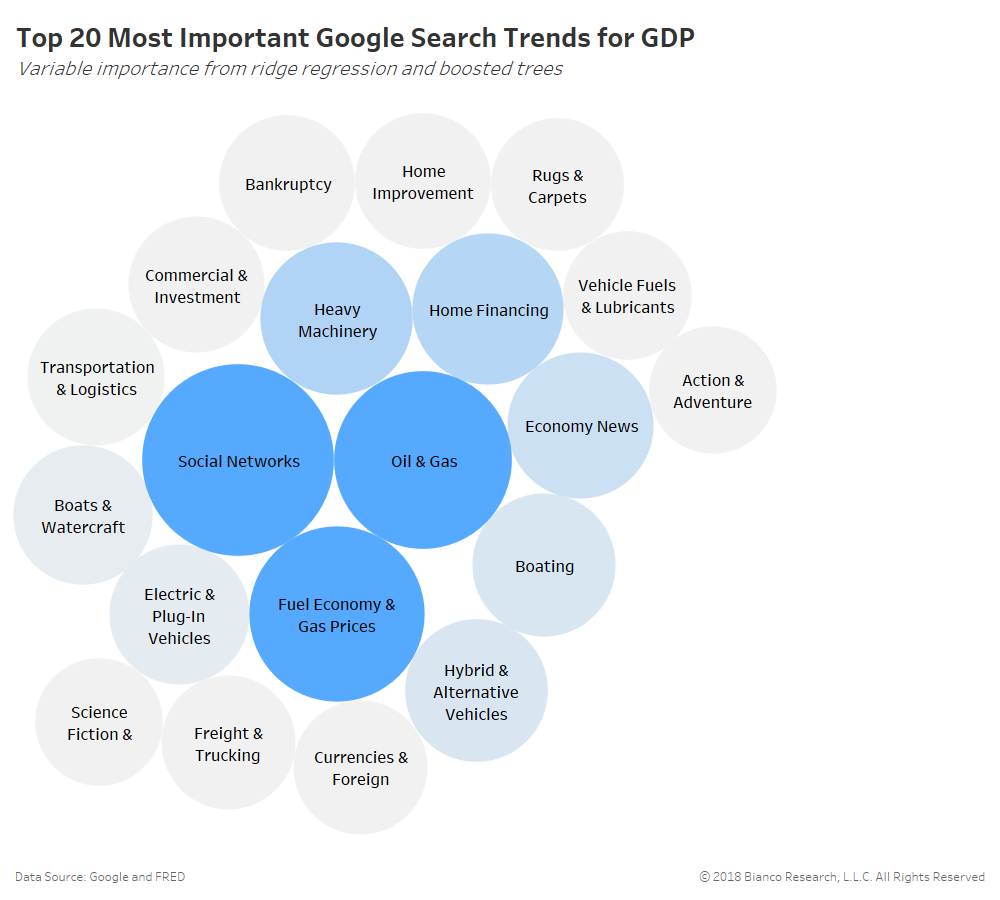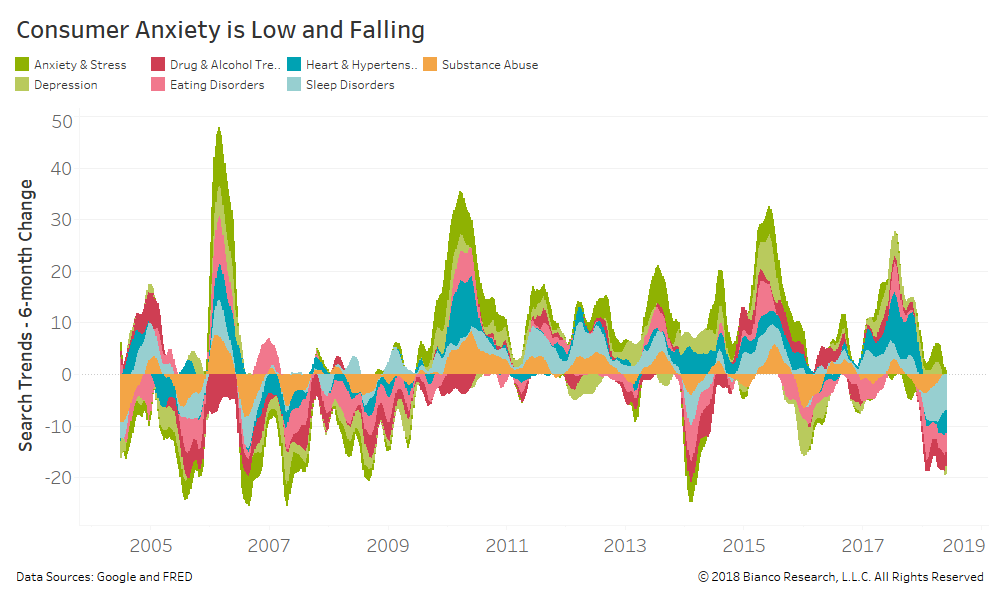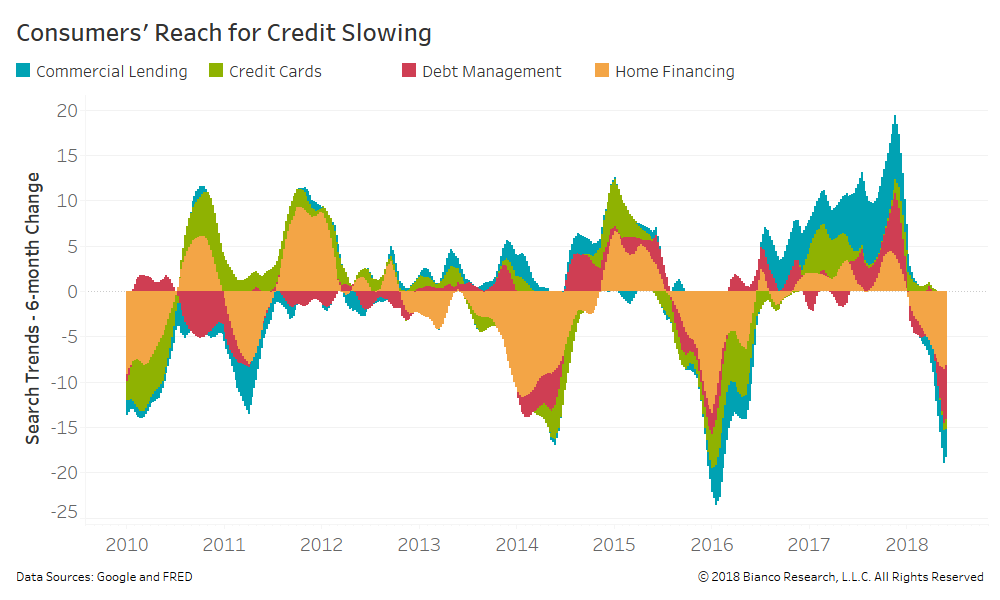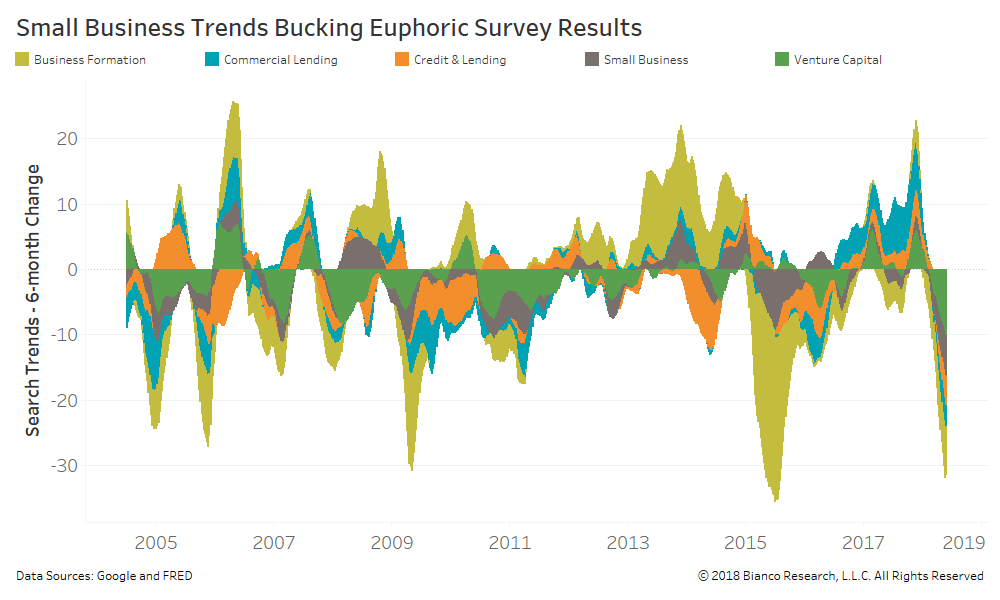Summary
Comment
The 20 most important search trends for forecasting GDP are shown below. Darker and larger circles indicate greater importance within our ridge regression and boosted tree models.
Social networks, oil & gas, heavy machinery, and home financing stand at the top of the totem pole.
The next series of charts show six-month changes in search trends by category.
The first chart shows the level of anxiety felt by consumers by measuring searches for stress, drug use, hypertension, depression, and more. Anxiety has indeed abated to levels seldom seen post-crisis. Traditional surveys are soaring high, which may explain much of this relaxed nature of consumers.

